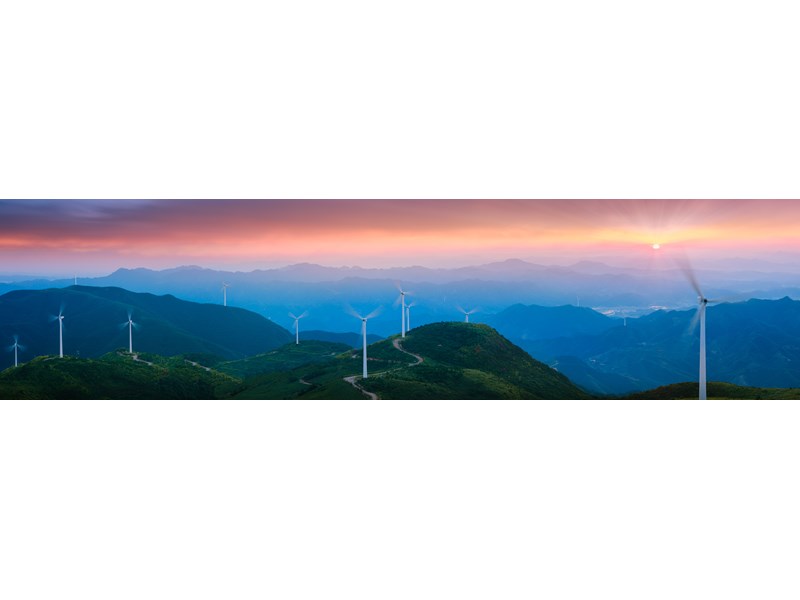Discuss your challenges with our solutions experts
How green is the EU pandemic recovery package?
Despite EU leaders reaching agreement, a substantial hurdle remains; ratifying the deal in the European Parliament, where its green credentials will be scrutinised
As Europe navigates the twin crises of Covid-19 and a severe economic downturn, attention has turned towards the recovery. To that end, the European Commission (EC) in May 2020 announced a €750 bn Covid-19 recovery package with a distinctly green tinge.
The EC had a tough job getting the package passed as proposed by all 27 Member States. Some were reluctant due to the sheer scale of borrowing proposed; others balked at the pace of decarbonisation proposed by the Green Deal.
How green is the pandemic recovery package, and what hurdles might it face in the European Parliament? Matthew Campbell, European Power Markets research analyst, investigates.
Landmark deal brings unity – for now
Finalising the dimensions of its pandemic recovery package is a huge achievement for the EU – reaching consensus between all 27 Member States was no easy feat and required compromise on all sides. But a delve into the detail of the plan confirms that at least some of this compromise has come at the expense of green initiatives. Most striking is the massive scaling down of the Just Transition Fund (JTF) to €10 bn, from €30 bn previously.
The €750 bn recovery fund deal was reached alongside agreement on the bloc's next seven-year budget, worth €1074 bn. Although the €750 bn budget remains unchanged, its composition has shifted. Previously we noted that the suitability of grants over loans had been questioned by certain Member States – particularly the so-called ‘frugal four’ of Netherlands, Austria, Sweden and Denmark – and it seems that their collective pressure on the European Commission, with further backing from Finland, has paid off. The €500 bn in grants initially proposed by France and Germany has been reduced to €390 bn with a corresponding increase in the figure allocated to loans from €250 bn to €360 bn. Notably, this group of countries also secured greater rebates on their EU contributions.
Of the €390 billion now assigned to grants – to be backed by EU issued bonds – around €312.5 billion (80%) will be allocated to the EU ‘Recovery and Resilience Facility’ (RRF), the core component of financial support. The rest is assigned to supplementary budget programmes and initiatives incorporating areas such as health, rural development and research into the green transition. With the RRF figure staying approximately the same, cuts were confined to the latter group; funding for this portion of the budget fell by 59% (-€112.5 bn). One of the programmes seeing a substantial cut is the Just Transition Fund (JTF) – which has had its funding reduced by two thirds, from €30 bn to €10 bn. The Horizon Europe and InvestEU programmes - both expected to contain elements of green investment – also had funding slashed.
It appears that the EU has re-prioritised; focusing less on collective climate-friendly programmes whilst giving greater impetus to securing firm support for countries’ individual post-pandemic recoveries. Although we will inevitably see an advancement of Europe’s energy transition – countries still must prove they are enacting green economic reforms in order to access their share of the RRF grant – the cuts to specific green programmes is a missed opportunity. Specific policy measures to advance clean energy will mostly be at the discretion of individual Member States.
Mixed fortunes for Poland
Although cuts to the JTF adversely impact Poland’s carbon-intensive economy, the criteria for accessing the fund are not as strict as environmentalists had demanded. The dispute over whether signing up to climate neutrality by 2050 (at the national level) should be a pre-condition to accessing the JTF ended in compromise; Member States will be eligible to access 50% of the money available without making a net-zero pledge. Bear in mind that Poland is the only EU member that has refused to commit to the bloc’s mid-century goal.
Along with Hungary, Poland also threatened to veto the entire package if the EU decided to tie the allocation of funds to any ‘rule of law criteria’ – in other words, the upholding of a common set of democratic principles across all EU states. The final deal features no specific mechanism in this area although it does require the Commission to propose measures to stop funding in response to rule-of-law breaches – it is intended that these measures will be administered the EU’s qualified majority voting system, potentially making it far more difficult for future decisions to be vetoed by individual states or small groups of resistance.
What next?
Despite EU leaders reaching an agreement, a substantial hurdle remains; ratifying the deal in the European Parliament. Early indications are that many MEPs – in parties such as the European People’s Party and the Greens – have strong reservations, suggesting another series of difficult negotiations will be necessary to obtain consent. Parliament will home in on efforts to secure a more robust ‘rule of law’ mechanism whilst also pushing for stronger links between the allocation of finance and climate goals.
Details of the final package of policies to support the decarbonisation of the EU's energy sector are yet to be determined – market participants will have to wait until after ratification before understanding exactly what support they may be eligible to receive and how related mechanisms are to be implemented. As discussed in our previous insight, Green shoots of recovery in the EU: Could the post-Covid 19 recovery package accelerate the EU’s energy transition? on the EU's Covid-19 recovery plan, a 15 GW pan-EU renewable power auction was mooted in the Commission’s earlier proposal. That measure has already been abandoned in favour of the Renewable Energy Financing Mechanism (REFM), which is intended to allow countries to offer financial support to projects in other Member States across the bloc, whilst receiving recognition towards meeting their own climate-energy goals.
